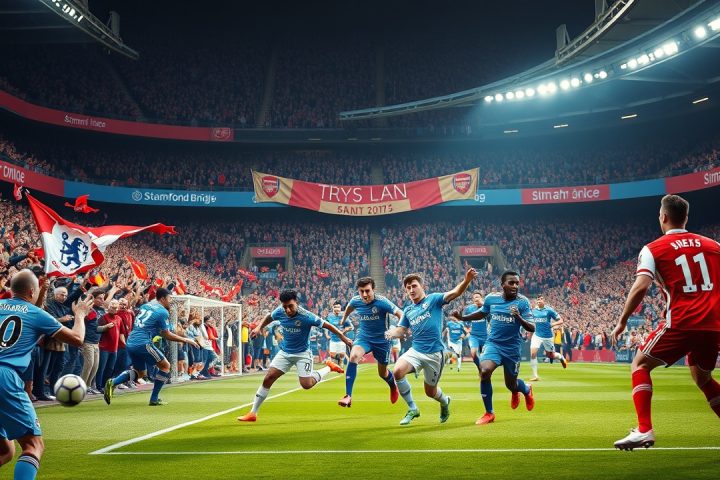Missed Shots in Football
In football, the phenomenon of missed shots—often overlooked—holds significant ramifications for both player performance assessment and talent identification. The analytical transformation of the sport, particularly evident since the early 2010s, has turned attention to shots on goal as a critical statistical category, with the focus on pinpointing the most effective finishers in the game.
Expected Goals on Target (xGOT)
The introduction of the expected goals on target (xGOT) metric further refined this analysis. This tool evaluates the probability of scoring based on various factors, such as shooting angle and placement within the goal. It provides a valuable perspective on finishing capabilities, rewarding players who convert difficult chances into shots that might score, while also shedding light on goalkeepers’ performances against challenging shots.
However, xGOT operates under the assumption that it discounts shots that have virtually no chance of becoming goals—thus, common shooting metrics often penalize both an errant shot landing miles off-target and a well-placed attempt that narrowly misses the woodwork using a uniform score of zero. Generally, scouts and analysts have leaned on subjective measures when determining the quality of shooters.
Statistics on Missed Shots
Remarkably, during the previous Premier League season, over half of all non-blocked attempts—amounting to more than 3,500 shots—failed to hit the target, suggesting a wealth of statistically unrecognized value among shot takers. This phenomenon raises the question: Are certain players simply better at missing than others? Identifying this could reveal promising finishers on the brink of improvement.
A straightforward metric for gauging the effectiveness of near-misses involves tracking instances of players hitting the woodwork. Observing data from the 2022-23 season across Europe’s leading leagues, Robert Lewandowski emerged as the player with the most strikes against the post (14), followed by Darwin Nunez (11).
Focusing on the proportion of these misses in relation to total attempts sheds light on different player performances. Villarreal’s Yeremy Pino, for example, exhibits a negative performance relative to expected goals, indicating that he may have been unlucky, given his six woodwork hits.
Identifying Talented Shooters
Indeed, among the 15 players who underperformed on the shooting goals added (SGA) metric, a number have garnered praise for their striking skills: players like Youri Tielemans, Harry Wilson, and Matias Soule demonstrate an eye for goal that goes beyond mere statistics.
Extending the evaluation to include shots that narrowly miss by a fraction further enriches the analysis. If the goal’s dimensions were expanded by 25%, a clearer picture emerges of the players frequently close to scoring, even without hitting the frame of the goal.
Among high-volume shooters, Erling Haaland, Lautaro Martinez, and Lewandowski head the list for near misses. However, when assessing each player’s attempts proportionally, it is evident that clinical finishers like Son Heung-min and Jamal Musiala are close to outpacing their expected scoring potential.
Contrastingly, players such as Tottenham’s Brennan Johnson and Samuel Lino reveal struggles with finding the net compared to what their shooting data suggests, highlighting the importance of metrics in broader evaluations of shooting ability.
Re-evaluating Shooting Metrics
The previous models still grapple with a crucial oversight—the quality of the shot opportunities. An individual who strikes the post from close range is not necessarily on par with a player hitting the bar from afar; such discrepancies can skew the interpretation of shooting accuracy and fortune.
By combining pre-shot xG data with shot placement misses, a new metric resembling xGOT can reward shooters who frequently execute near-misses from challenging angles and positions.
Based on analyzing more than 50 missed shots over the last three seasons, the distribution of misses could provide insights into a player’s overall striking proficiency. This new angle yields interesting names, including Jarrod Bowen and Hakan Calhanoglu, who showcase talent through their ability to strike the ball with precision and power. Furthermore, players like Raphinha and Lamine Yamal, despite impressive skill displays, show a tendency for underperformance relative to their xG statistics.
Conclusion
This ongoing exploration underscores the necessity of re-evaluating how off-target shots are perceived within traditional football analytics, especially since they might indicate potential upswings in players’ scoring ability. Efforts are underway within clubs to utilize these new metrics alongside xGOT for a holistic view of shooting effectiveness.
At the inaugural Field of Play conference, data scientist Alex Marin Felices presented findings connecting off-target shots to future player performance, emphasizing their potential role in scouting and recruitment.
As clubs strive to enhance their talent identification processes, understanding the nuances of shooting statistics—both on and off-target—could prove vital. For players such as Raphinha, Soule, Lino, and Strand Larsen, continuous attempts may pave the way for more significant successes in front of goal in the future.




